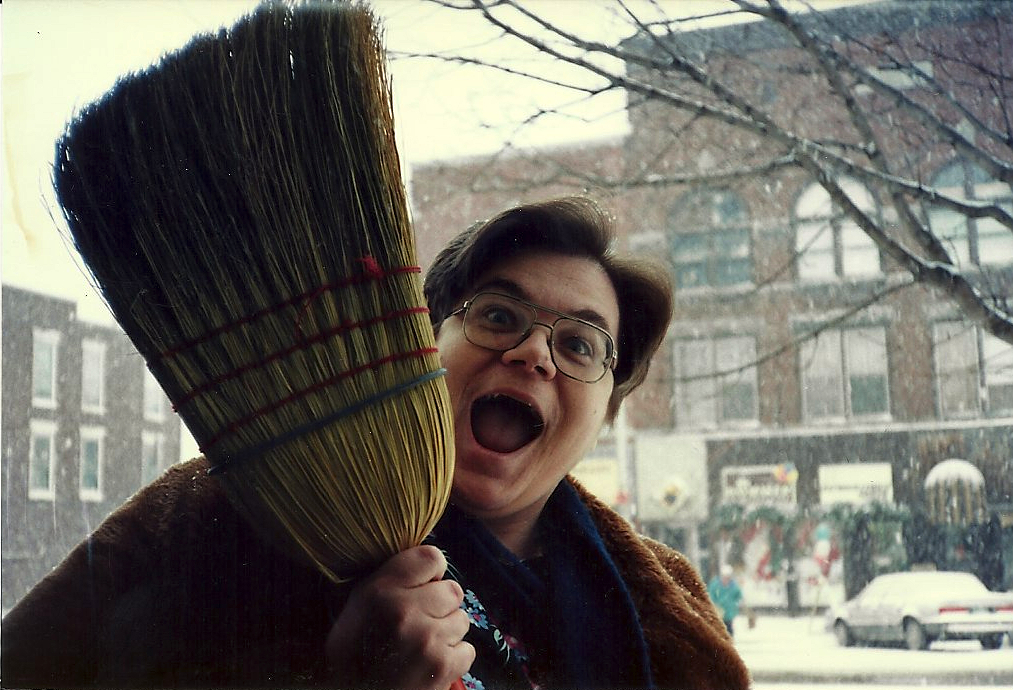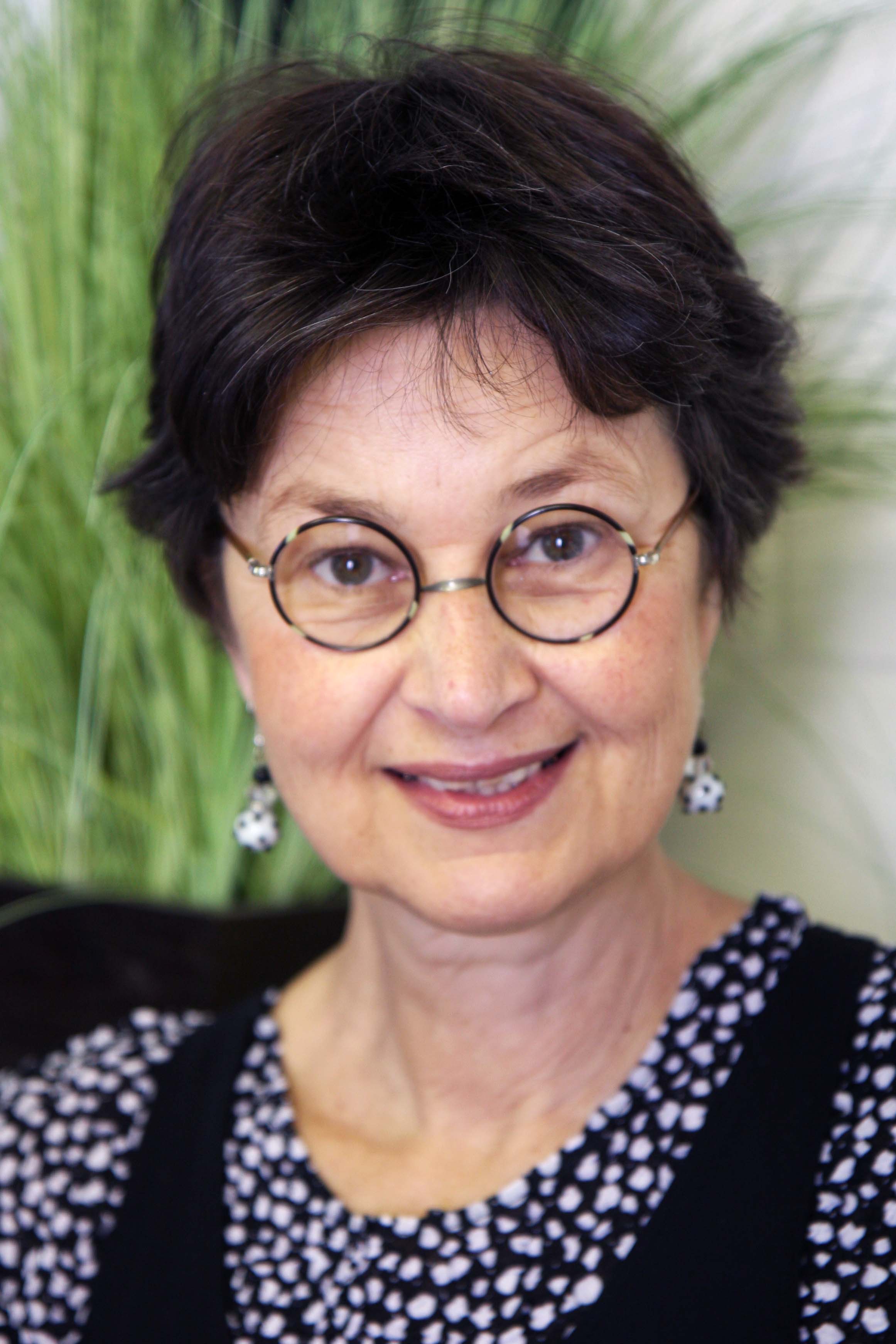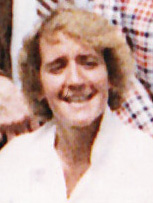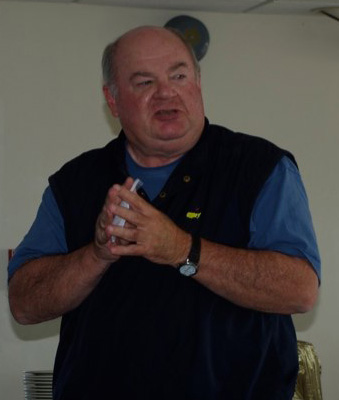Site Office Manager, St. Albans; Assistant Registrar
In 1978, I moved to Vermont and after two weeks began working in the Office of the Chancellor, Vermont State Colleges. It was almost immediately after that when I first heard about Community College of Vermont and its mode of operation. I was very excited to learn about its non-traditional methods. I had become familiar with non-traditional colleges as my closest friend was a student at Empire State College in New York at that time. As someone who was herself an adult student working toward her degrees, I knew immediately that CCV was the place where I wanted to continue my education.
 I enrolled as a CCV student after a year working in the OC-VSC in order to gain residency and free tuition. As someone interested in the Humanities, I began with literature classes mixed with general education requirements. This was through the St. Albans location, as that was where I lived. It was wonderful to have the opportunity to take classes where I was living. One class that stood out was an independent student I took in Modern British Literature with Michael Sawdey. (Please see the piece that Michael wrote for the CCV history.) This was the first independent study I ever took, and it was perfect to have an excellent instructor all to myself. Of course poor Michael had me constantly picking his brain for all of the information I could garner. This added contact with CCV increased my passion for the College, so that when the opportunity arose to transfer to CCV and in St. Albans, I became a CCVer, something I never regretted as I remained so for thirty years until I retired.
I enrolled as a CCV student after a year working in the OC-VSC in order to gain residency and free tuition. As someone interested in the Humanities, I began with literature classes mixed with general education requirements. This was through the St. Albans location, as that was where I lived. It was wonderful to have the opportunity to take classes where I was living. One class that stood out was an independent student I took in Modern British Literature with Michael Sawdey. (Please see the piece that Michael wrote for the CCV history.) This was the first independent study I ever took, and it was perfect to have an excellent instructor all to myself. Of course poor Michael had me constantly picking his brain for all of the information I could garner. This added contact with CCV increased my passion for the College, so that when the opportunity arose to transfer to CCV and in St. Albans, I became a CCVer, something I never regretted as I remained so for thirty years until I retired.
CCV back then in 1981 was very different in some ways than it is today in 2014. It was much smaller, and there was little staff turnover, so that over the course of a few years despite the lack of geographical propinquity, everyone became familiar with everyone else. New staff was added occasionally as the college grew, and when an all-college meeting was held, you knew immediately who the new person was as that was the only face that you didn’t already know.
After a few semesters, I realized also how well I knew all of the students. It became possible to greet each student by name as they would come in for classes or advising. It truly was a family where everyone looked after each other and helped each other along the way. Of course, the “down” side was that it could take hours to go out to purchase a loaf of bread or a quart of milk. There was always a student or teacher that would cross one’s path, so long conversations would ensue. To a certain extent this is still true about CCV today despite it incredible growth, but only with certain students with whom each individual works rather than everyone.
I can remember one time in the early days when I was in the center late just before classes began. One of the students came into my office just to talk. Then another one joined us, then another, and another and another. Pretty soon it was like an impromptu family party with laughing and everyone sharing how their classes and lives were going. At the end there were about twenty-five students, young and old, science and English students, Vermonters and movers in, male and female, and any other diversity in existence all in my office which was twelve by twelve feet.
Space in my early days was always an issue. The first two site locations when I began working had limited classroom space, and it wasn’t always the best, being crowded, irregularly shaped, cold and sometimes not too private. In the first building there was a back classroom that bordered on two sides with an unheated storage area; that was frigid during really cold winter days. I participated in one class there where all students were wearing their winter coats by the end of class. Enthusiasm was not frozen out, though. Another very small classroom also doubled during the day as an advisor’s office and lunch room. That was all right until the day the refrigerator broke and began to give off gas. Fortunately, it wasn’t at night when students where in a class. This was in the first location where I worked.
The staff in the St. Albans Center was extremely close in those days and for years everyone’s talents seemed to dovetail. This was fostered by making do creatively with little to make things work. When I began at CCV, there were no computers. We used to do everything “manually” or with typewriters. The course list was generated by using small pieces of paper that would then be assembled. This process often generated late nights. One rainy fall day, the St. Albans staff at the time (me, Joan Kaye, Pixley Hill, and Michael Sawdey) worked on the course list until literally midnight. I probably shouldn’t say, but a good time was had by all helped along by some wine. This was the only time I can remember actually having an alcoholic beverage in the center. We were feeling quite pleased with ourselves at the end of the evening. It was a good thing that no one lived truly far away.
Closeness among staff remains to the present day. After a few years when Pixley left the college, these connections were still evident. Her family owns The Tyler Place Resort on Lake Champlain in Highgate. Each year for a long time for the St. Albans staff retreat, Pixley invited us to stay at the resort for an evening, overnight, and the next day. We did work hard, but we had fun, also. Quite a few college get-togethers in the early days were held there.
After a couple of years, we moved literally next door. This was space that was much more suitable. The classrooms were larger and configured more logically for a college class, although there still were not enough. Most classes at the time were held in locations throughout St. Albans or other locations such as Swanton and Enosburg. Classes were held in high schools, church halls, and once for a class that I took in one of the student’s home. These locations were sometimes problematic, as when the church hall was a Sunday school classroom where the desks were more appropriate for younger and smaller individuals. Probably obviously, students overwhelmingly preferred to have classes in the CCV building. Eventually the College moved a second time while I was working. This was to the current location, which was built for the College specifically by Jim Warner, a local developer. (Please see the Warner history piece regarding this also posted on the CCV stories website.)
Moving from location to location was an adventure in itself. The first move I participated in was, as mentioned, literally to next door. Because of the closeness, moving was done primarily by staff in “free” moments. This wasn’t too awful, except it was during the cold months, and there was an alley between the two buildings; flowing from the alley across the sidewalk was a thick tongue of ice, rather like a miniature glacier. Carrying computers across this ice was nerve wracking. Another adventure in this move was the fact that for a short time the phones rang in the new building while everyone was still in the old.
The second move to the current building was hired out. That went much more smoothly and came off without any pause. We held classes in the old building in the morning; the movers came and moved everything to the new building in the afternoon, on a day when there were no classes; without missing a beat we held evening classes in the new building…no time was lost at all. For the first few years a small part of the building was occupied by Vermont Adult Learning/Adult Basic Education; however, eventually CCV purchased and occupied the entire building. Now classes are held in our own space, creating a true sense of a vital and vibrant college community.
One of the comments that used to irk me (to put it mildly) in the early days was when a student or potential student would come in and say something like, “I’m just here to take a class or two before moving on to a real college.” Invariably I would respond, “We are a real college.” As the years progressed, CCV grew, changed, and gained a reputation for excellence. Those types of comments disappeared. Other area colleges would even advise students to come to CCV in the summer to retake a class, for example English Composition, which they had failed during their regular academic year. Afterwards, often a student would tell us that they came expecting the class to be a snap, but they realized that our class was actually more difficult than the one at their home college. A number of times one of those students would transfer to CCV rather than return to their original school. I loved that.
Eventually, our graduates entered all types of jobs in the community. Soon everywhere I went I encountered a CCV student whom I had known, and as the student body grew so that it was impossible now to know everyone, I would enter somewhere (a bank, a local supermarket, or just about anywhere), and someone would proudly reveal that they were a CCV graduate or student, or that someone in their family was. We had husbands and wives, siblings, or generations of students from the same nuclear family. The College had come of age.
One of the best things about working at CCV (other than the other staff, faculty and students, of course) was that it was impossible to predict what any given day would bring. Occasionally, life can be sad or tragic, as when we would lose a student to a car accident or illness, but mostly incidents would be hilarious. Once toward the beginning of my time at CCV, a man with long hair and beard came in inquiring about becoming a student. We talked for about fifteen minutes; then he asked to use the bathroom. Taking the literature I had given him, he went down the corridor. After a while, I realized he had never returned. Fearing he was ill, I went back. He was gone, apparently having left by the back door. However, the bathroom sink, toilet, and floor were covered with hair. He must have cut that long hair and beard off! Why? We speculated all sorts of things from disguising himself after having robbed a local bank to just being tired of the hair in the heat of that hot summer. This was a mystery never solved. We never knew what would come through the door; however, it was always fun.
Getting together with staff from around the college was always enjoyable and an opportunity to build collegiality. Sometimes this was work, as when site administrative staff would get together to do mailings in the days before a professional mailing service was used. This was known as slapping labels. The participating staff would assemble, usually in Montpelier as that was centrally located, and find heaps of course lists and labels waiting. Dressed in very casual attire, hilarious conversations would ensue as those labels were affixed to the course lists in zip code order with a friendly rivalry to see who could “slap” the most labels. It was a chance to share what was happening in various sites, make contacts with peers, share personal stories, and realize that no person was alone out there in an isolated site; we were all part of the same college.
One of the best times was (and is) when the entire college staff convened formally for Convocation or currently for Staff Development Days. Even here times could be funny. I believe it was for the first Convocation when I and two other staff became lost and arrived late after the president began his remarks. We thought we could unobtrusively slip in the back of the room, disturbing no one. However, it was a wooden “nightingale” floor; every step we took creaked embarrassingly loudly. Everyone turned and looked at us.
One of the best things about working at CCV was that even though there were the everyday, unvarying tasks that go with any job, there was always something new to be taken up. Often these wee self-assigned. One of the things that I enjoyed the most was working on Vermont Affairs. This was a journal that existed for two/three years that was published by CCV; it took on issues that affected the state. For example, it carried articles on the ski industry, interviews with prominent Vermonters, the relationship between Vermont and Japan, eugenics in the state in the early twentieth century…to name a few. I was privileged to act as editorial assistant and proofreader. It was conceived and brought to fruition by David Buchdahl, former Coordinator of Instruction and Advisement, Regional Director, Academic Dean, and Director of Institutional Research and Planning, now retired. I only wish that the journal had endured for a longer period of time; it was an ornament in CCV’s crown.
Another task that I volunteered for was to act as the librarian in St. Albans for a time. I was always interested in that area, and as the student body grew a great need arose to help students find resources for research papers or simply topics in which they were interested. CCV began to develop a virtual library where students could access information through the computer system and/or order books via interlibrary loan. However, staff was small, and someone had to show students how to deal with the system to obtain what they needed. For a while I helped students piecemeal, when I could squeeze in the time, and faculty would also ask me to make a presentation teaching their class as a whole. Despite not always feeling the most comfortable speaking in front of groups, I still took on this task until finally CCV grew enough to support someone dedicated to the “library” to do this.
One of the tasks that I most enjoyed was working with the Linnell family and the Linnell Fund. Robert and Myrle Linnell were Vermonters who worked in higher education at the University of New Hampshire and then the University of Southern California. When Bob retired and returned to the Vermont and New Hampshire area, they wanted to help poor Vermonters. They chose CCV and donated three thousand dollars to the college in order to assist struggling students. One thousand dollars of that money was given to the St. Albans Center. I was asked to administer that fund. A method was developed to select deserving students and small awards were given out in increments of anywhere from twenty to a few hundred dollars. I always reported back to Bob and Myrle regarding the disbursement of the funds. They continued to donate a thousand dollars a year to St. Albans (sometimes giving extra during a given year). It became a joy to have contact with them. After Bob’s death, Myrle continued helping, and upon her death shortly before I retired Bob and Myrle’s four children continued the tradition.
The Linnell Fund was the only task I retained when I made the switch from being the St. Albans Center Office Manager to Assistant Registrar. I have to give a huge nod of appreciation to Tom Arner, CCV’s Registrar (dux meus, optimus, maximus), for stealing me from the St. Albans Team and recruiting me to his. This worked incredibly well for me as I continued to work in the St. Albans Center, thus, in a sense having my cake and eating it too, as I did not have to leave my St. Albans colleagues/friends.
Being the new Assistant Registrar was incredibly fun, a good move for me, and working with Tom was perfect. (I had even found another person who has the same macabre sense of humor and love of language.) This new work was renewing and interesting. It gave me the opportunity to delve more deeply into Colleague, the college’s database, helping many of the staff when they had problems with using the academic/registrar’s section of it. This enabled me to have more contact with staff than most other CCVers. I never felt isolated, and retain friendships to this day. For a time I was also the College’s Residency Officer. This was tough at times, but always interesting. There were also always those “other duties assigned.” However, a large part of the position involved being the individual who admitted and tracked out international students studying at CCV on student visas, and an even larger part was covering military/veterans affairs.
Having been born and lived on and off for nearly thirty years in New York City, I was used to and enjoyed being around a great cultural diversity. Losing that when I moved to Vermont was a bit of a culture shock for me. With the opportunity to work with CCV’s international students, I regained that diversity. It was a pleasure to speak with students (and sometimes their parents), whether traditional age or “adult.” from literally all over the world. We had students while I was engaged in this duty from countries as diverse as Argentina, Kenya, China, Vietnam, Japan, Botswana, Saudi Arabia, Australia, and many others, including many of the nations of Europe from Great Britain to Russia. Learning something of their customs and phrases of their languages was always something I looked forward to every day. It was also interesting to hear their viewpoints on many subjects. While CCV never had as many international students as other colleges due to our non-traditional format of delivery, those who were attracted to us generally did extremely well and added an important dimension to our student body.
One of the responsibilities that I enjoyed the most was working with CCV’s veterans and military students. I grew up as a military brat, as my father was a career Air Force officer, who flew in World War II, then from the late forties into the early eighties. It was a culture I understood. When I began, the college had 117 veterans; when I retired, the veteran population was 400. It was important to be timely in certifying our veterans to and working with the Veterans Administration in order to obtain for them their benefits, as many of them depending upon receiving benefits in a timely manner in order to pay living expenses. During this time as our military student numbers grew, the College recognized the need to focus on this population and as a result did many things to assist them. There was an academic coordinator appointed in each Center assigned to work with veterans and military students, a special one-credit workshop was developed to assist military students acclimate to college life, and there were workshops for selected staff to educate them about military students’ needs. Now there is even two dedicated Veterans Services staff, one in the northern and one in the southern part of the College.
I and others in the College also worked closely in conjunction with the Vermont Army and Air Force National Guards to assist guard members; this was especially important as during this time mostly all of our state guard were deployed to Iraq and Afghanistan and the new veterans’ GI Bill, Chapter 33, went into effect. Myself and other CCV staff were intensely involved in the weekend Yellow Ribbon Events evolved by the Guard for returning members after deployment. The Chittenden Center even offers each year a special night of events for our military students around Veterans Day. Upon being asked for a representative, the College appointed me to Vermont’s Military Family and Community Network; there I was the only representative in the group for the State’s post-secondary education community. This was a fascinating opportunity to learn about and connect with Vermont’s military and others intent upon serving them. Among our student population, there is no group more appreciative of the help we give them than our military students, whether veterans, active servers, or guard members.
I have always felt that it was a privilege to have had the good fortune to spend thirty years working for CCV. It was an incredibly difficult decision to make when I retired even though it was the right one. Leaving all of the people with whom I worked over the years at CCV, whether staff, faculty or student, was one of the hardest things I have ever done. However, many of them I still see, and they are still friends. I enjoyed every minute. Who could ask for more? But I was lucky to have more.
I was asked to return to the College after a year’s retirement to start this history/stories project. It gave me an opportunity to reconnect with many of the people with whom I worked for so many years and with the college, itself. I was fortunate to speak with individuals from more than thirty years ago to the current day, all of whom had some connection to CCV. It demonstrated to me and reinforced the knowledge that CCV is, indeed, a special and unique organization. I believe that the College has changed the lives of countless Vermonters to date, and through those individuals has changed both their families because their example and the State of Vermont in incalculable ways via their talents and contributions. We would all be poorer if CCV didn’t exist. As the future unfolds, I am sure that CCV will continue to be a force for the good of Vermonters and the State. For all this we have to thank Peter Smith, our founding president whose clear vision created CCV.

 me that: a) I was on the “Curriculum Committee”, b) the meeting was the next day, and c) to bring scissors. Scissors?!? I soon found out. The next day, five or so of my new colleagues gathered around a table, scissors in hand, and we all started cutting up the CCV course lists.
me that: a) I was on the “Curriculum Committee”, b) the meeting was the next day, and c) to bring scissors. Scissors?!? I soon found out. The next day, five or so of my new colleagues gathered around a table, scissors in hand, and we all started cutting up the CCV course lists.

